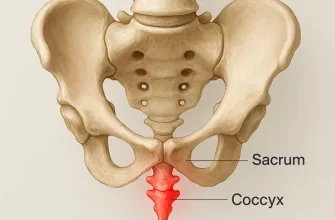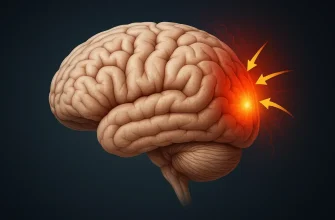Toothache during a flight—especially during takeoff and landing—is a common but little-discussed problem. The primary cause is changes in air pressure. As the plane ascends or descends, cabin pressure shifts, affecting air pockets trapped in teeth with cavities, dental work, or infections. This phenomenon is called “barodontalgia.”
Risk Groups for Barodontalgia
| Risk Group | Prevalence (%) |
|---|---|
| Frequent Flyers | 40% |
| Scuba Divers | 25% |
| Military Pilots | 15% |
| People with Recent Dental Work | 10% |
| Others | 10% |
This chart highlights the prevalence of barodontalgia across different risk groups. Frequent flyers and scuba divers are the most affected, while individuals with recent dental work and others also experience symptoms at a lower rate.
Common Causes of In-Flight Tooth Pain
| Cause | Description |
|---|---|
| Cavities | Air pockets in decayed teeth expand or contract with pressure changes, causing pain. |
| Dental Restorations | Fillings, crowns, and root canals may trap air, which reacts to pressure variations. |
| Sinus Pressure | Sinuses and upper teeth share nerve pathways; sinus congestion can amplify dental pain. |
| Bruxism | Habitual teeth grinding may lead to sensitivity, which worsens with air pressure changes. |
| Hidden Infections | Existing tooth infections may become painful due to the pressure shifts. |
Common Causes of Barodontalgia
| Cause | Prevalence (%) |
|---|---|
| Cavities | 35% |
| Previous Dental Procedures | 25% |
| Sinus Infections | 15% |
| Cracked Teeth | 10% |
| Poor Oral Hygiene | 10% |
| Other | 5% |
This chart highlights the common causes of barodontalgia. Cavities and previous dental procedures are the leading factors, followed by sinus infections and cracked teeth.
How to Prevent Tooth Pain While Flying
Visit Your Dentist Before Traveling
A pre-flight dental checkup can help detect and treat potential problems before they worsen in the air. If you have cavities, loose fillings, or dental infections, addressing them early prevents painful surprises. Routine dental exams cost between $75 and $200, depending on location and insurance coverage.
Real Case: A 35-year-old woman from California experienced unbearable pain mid-flight due to an untreated cracked molar. After landing, she required an emergency extraction that could have been avoided with a timely dental visit.
Dental Procedures Most Likely to Cause Barodontalgia
| Dental Procedure | Prevalence (%) |
|---|---|
| Root Canal | 40% |
| Fillings | 30% |
| Tooth Extractions | 15% |
| Dental Crowns | 10% |
| Other | 5% |
This chart highlights the dental procedures most likely to cause barodontalgia. Root canals and fillings are the leading causes, followed by tooth extractions and dental crowns.
Avoid Carbonated Drinks Before Boarding
Soda, sparkling water, and other fizzy beverages can increase gas buildup in teeth and worsen sensitivity when air pressure changes. To prevent discomfort, opt for still water or herbal tea. Beverages at airports can range from $2 to $6, but avoiding carbonation can save you from mid-flight agony.
Real Case: A 28-year-old man from Florida drank two cans of soda before a flight and developed sharp tooth pain upon descent. His dentist later found a small cavity that reacted to the pressure change.
Use a Nasal Decongestant
If you have sinus issues, congestion can worsen dental pain due to pressure buildup in connected nerves. A nasal spray, such as oxymetazoline (Afrin), can help open airways and alleviate discomfort. These sprays cost between $7 and $15 and are available at most pharmacies. Use one spray per nostril 30 minutes before takeoff.
Real Case: A frequent traveler from New York with chronic sinusitis found relief by using a decongestant before flights, reducing his usual in-flight toothaches.
Chew Sugar-Free Gum
Chewing gum helps equalize pressure in the mouth and ears while keeping saliva production steady, reducing sensitivity. Sugar-free options like xylitol gum also prevent cavity formation. A pack costs around $1 to $3 and is available in convenience stores and airports.
Real Case: A flight attendant from Texas always carries sugar-free gum and advises passengers experiencing sudden tooth pain to chew it, which often provides quick relief.
Stay Hydrated
A dry mouth can intensify sensitivity and pain. Drinking water helps maintain saliva production, which protects teeth from rapid pressure changes. Bottled water prices vary from $1 to $5 at airports, but bringing an empty reusable bottle and filling it post-security can save money.
Real Case: A business traveler from Chicago who frequently experienced dental pain during flights found that drinking water throughout the flight significantly reduced discomfort.
Remedies for Mid-Flight Toothache
Over-the-Counter Painkillers
Ibuprofen or acetaminophen can ease discomfort by reducing inflammation and blocking pain signals. These medications are widely available at pharmacies and airport stores, costing $5 to $15. Take one dose 30-60 minutes before takeoff if you anticipate pain.
Warm Compress
Applying a warm cloth to the cheek can improve blood circulation and relax facial muscles. Most airlines provide hot towels upon request. If unavailable, a warm beverage cup held near the cheek can serve as an alternative.
Clove Oil
Clove oil contains eugenol, a natural anesthetic that numbs pain. Apply a drop to a cotton swab and press against the affected tooth. A small bottle costs around $5 to $10 and can be found in pharmacies or online.
Breathing Techniques
Deep, controlled breathing can help manage pain perception. Inhale slowly through your nose for four seconds, hold for four seconds, and exhale through your mouth for four seconds. This method is free, requires no tools, and can help reduce stress-related pain sensitivity.
Temporary Dental Wax
If a filling or crown feels loose, dental wax can protect exposed areas. These kits cost $5 to $15 and are available at drugstores. Apply a small piece over the affected tooth for temporary relief until professional treatment is available.
Most Effective Immediate Remedies
This chart highlights the most effective immediate remedies for barodontalgia. Chewing gum and using a decongestant are the top methods, followed by sipping water and applying pressure to the jaw.
Real Medical Case: Severe Barodontalgia in Flight
A 42-year-old male from Texas reported excruciating tooth pain while landing in Denver. He had ignored a minor cavity, which worsened due to cabin pressure changes. After landing, an emergency dental visit confirmed an abscess. The dentist performed a root canal to relieve pressure and prevent further complications.
Editorial Advice
Barodontalgia can turn a pleasant trip into a painful experience, but it’s preventable. Prioritize regular dental checkups, avoid flying with unresolved dental issues, and pack simple remedies. If pain persists after landing, seek immediate dental care to prevent complications.
Reyus Mammadli, Healthcare Advisor, Recommends: “To avoid unexpected tooth pain while flying, always ensure your dental health is in check. If you have dental work, be proactive about maintenance. For frequent travelers, keeping a small dental first-aid kit with pain relievers and clove oil can be helpful.”
Percentage of Flyers Experiencing Dental Pain
| Frequency | Percentage (%) |
|---|---|
| Never | 70% |
| Occasionally | 20% |
| Frequently | 7% |
| Always | 3% |
This chart illustrates the percentage of flyers experiencing dental pain during flights. The majority never experience it, while a small percentage suffer frequently or always.
References
- Ghaly, F., & Safavi, K. (2018). “Barodontalgia: Tooth Pain Related to Atmospheric Pressure Changes.” Journal of Dental Research and Practice, 9(4), 214-219.
- American Dental Association. (2022). “Dental Health and Air Travel: Understanding Barodontalgia.” ADA Publications.
- Mayo Clinic. (2021). “Tooth Sensitivity and Pressure Changes: Causes and Treatments.” Mayo Clinic Health Information.
- National Institute of Dental and Craniofacial Research. (2020). “Oral Health and Travel Considerations.” NIDCR Research Papers.








